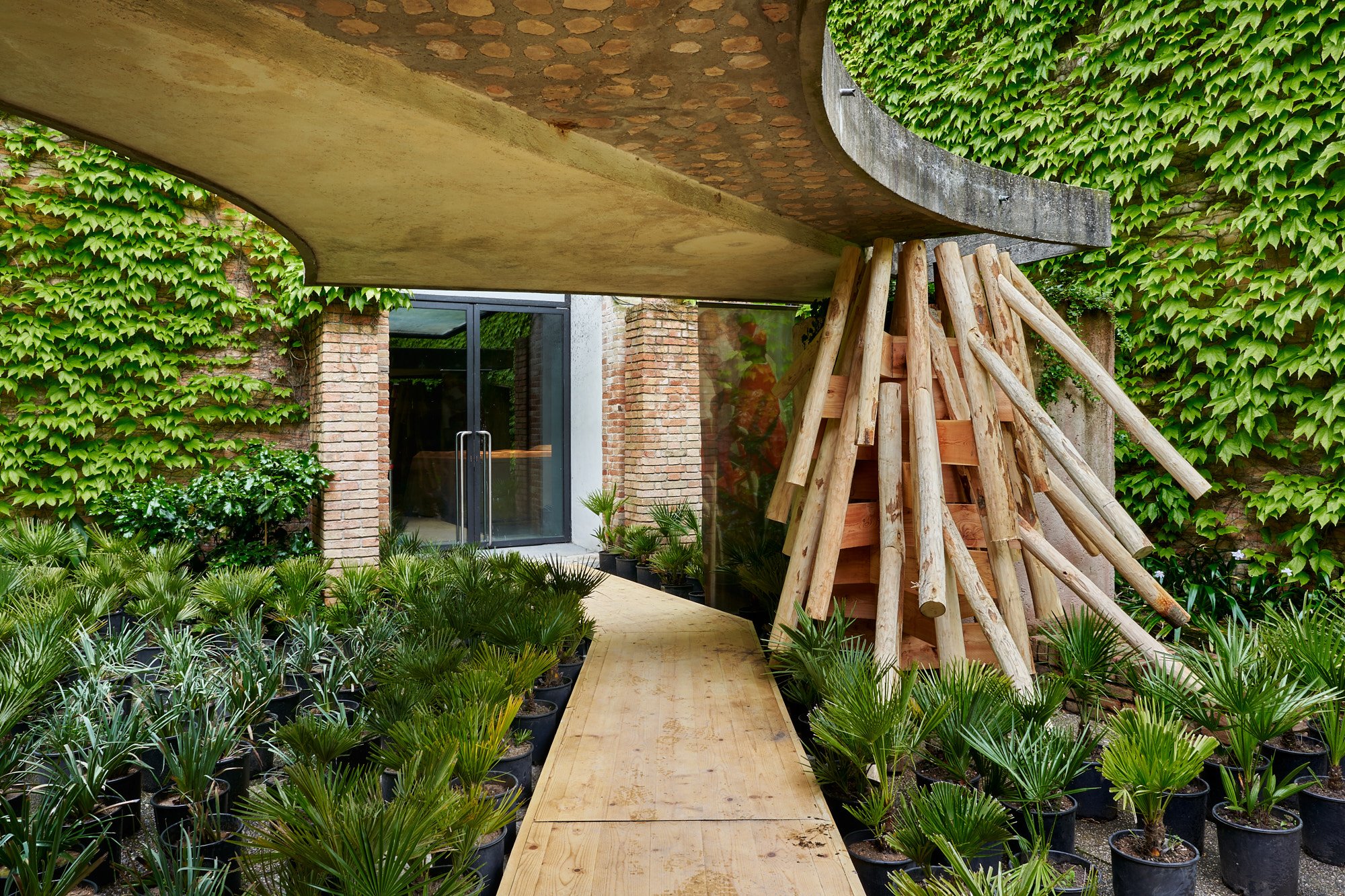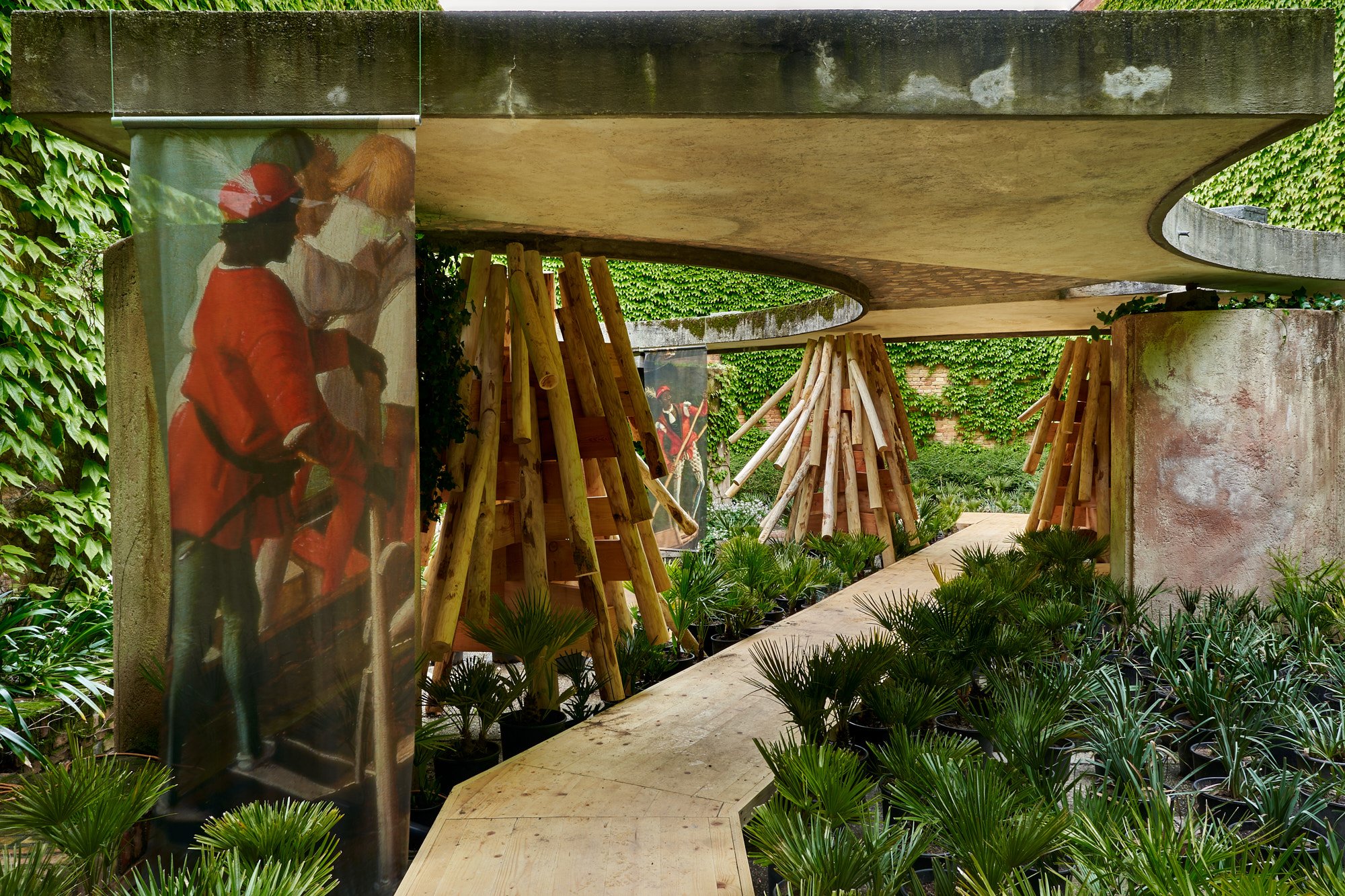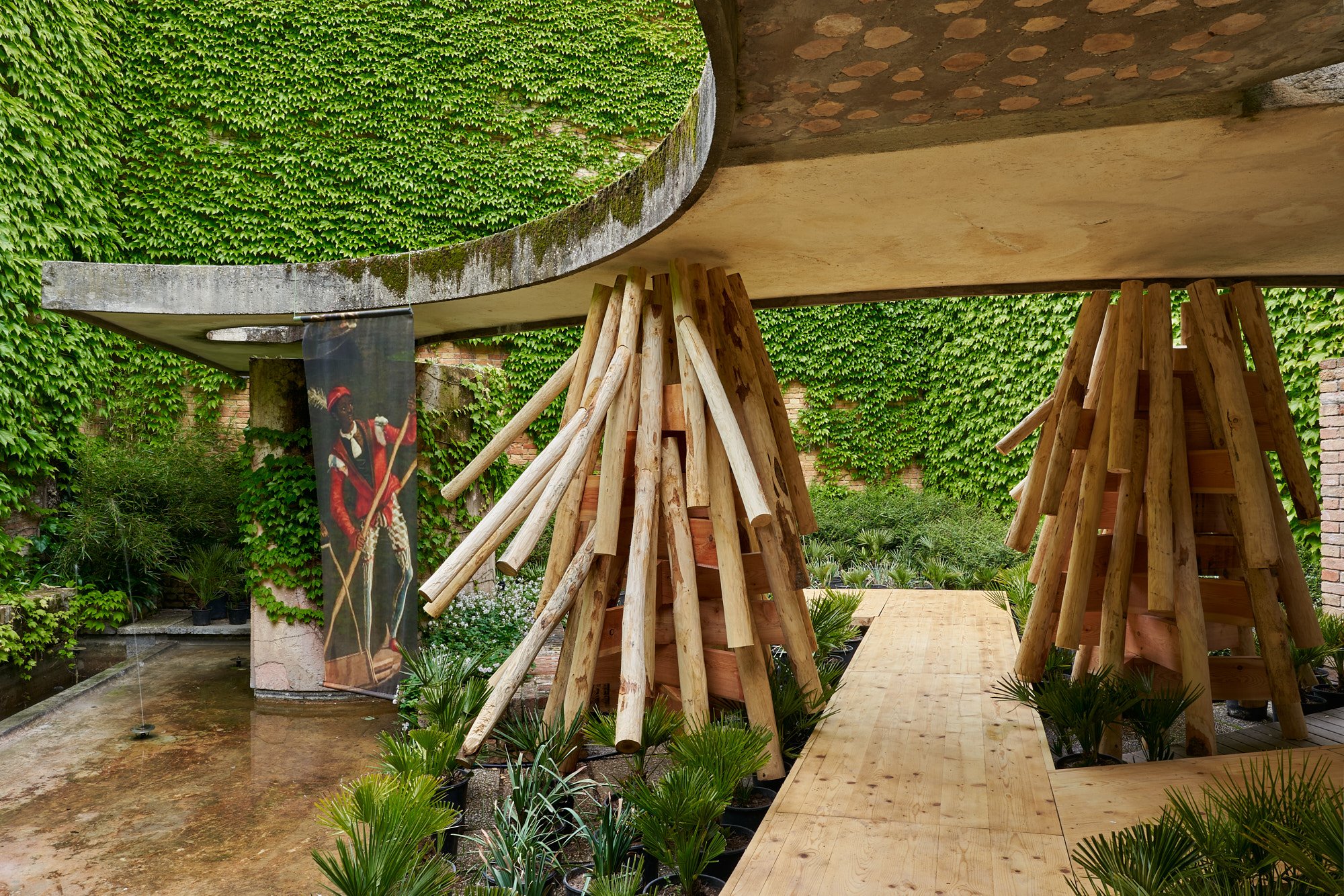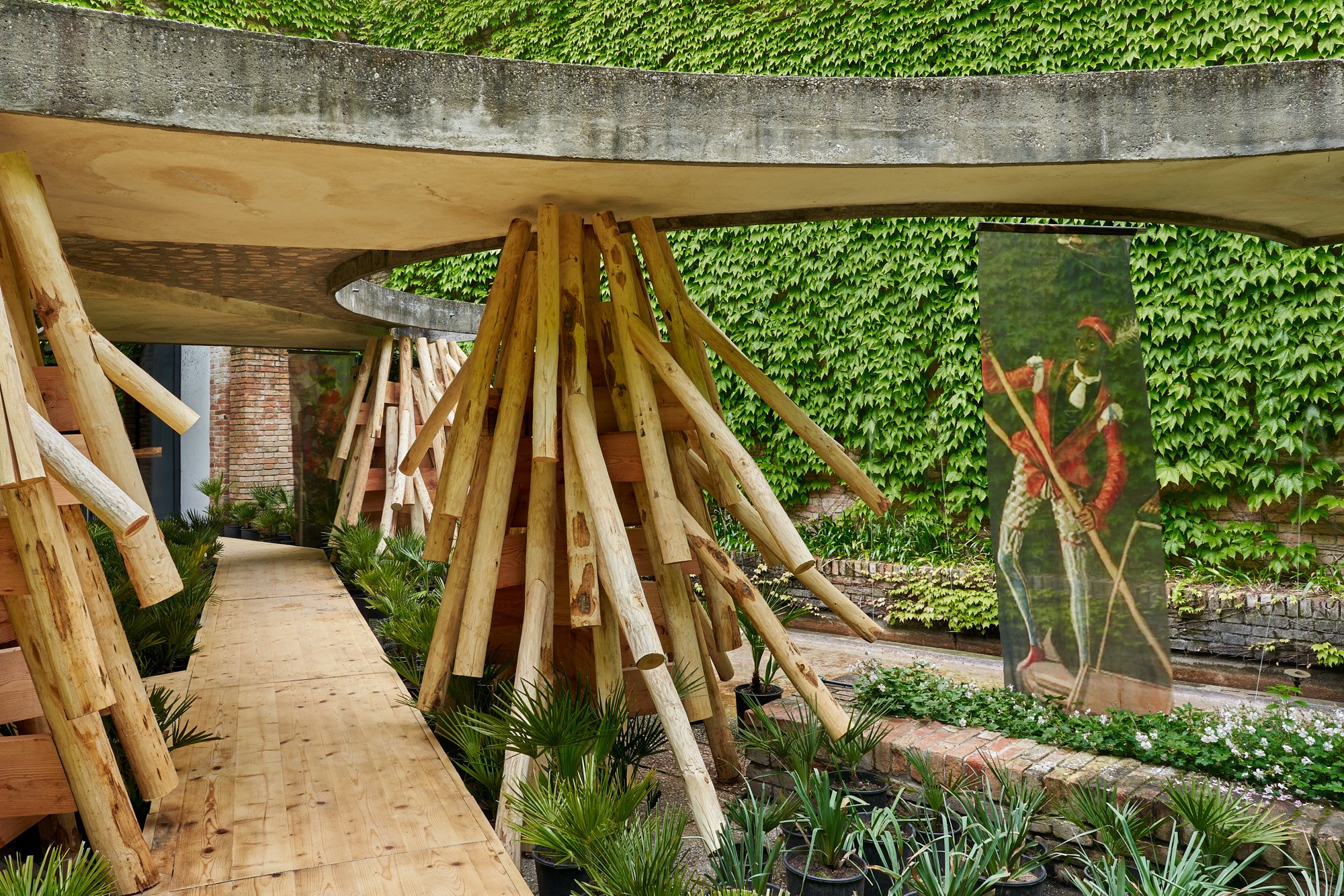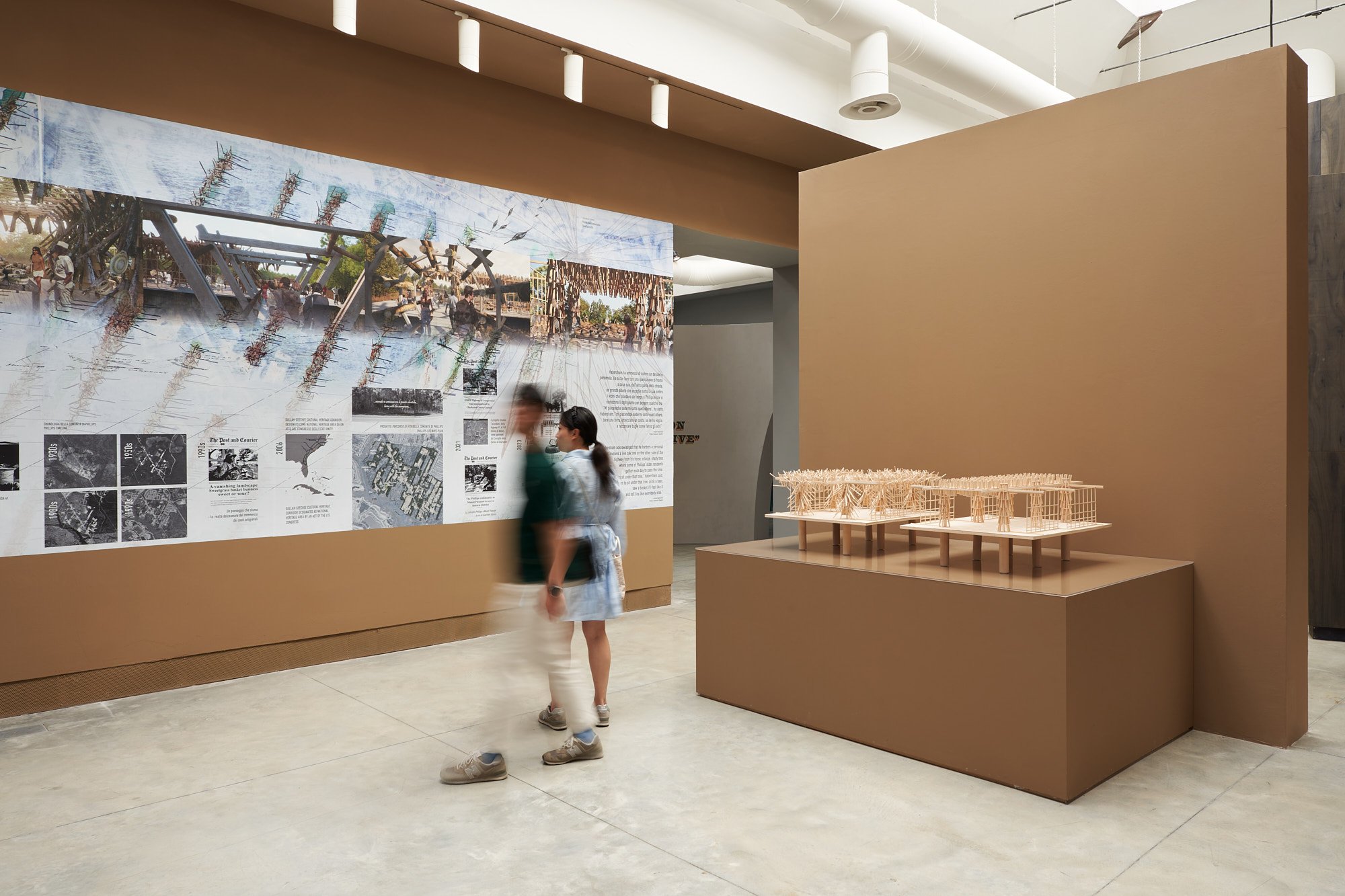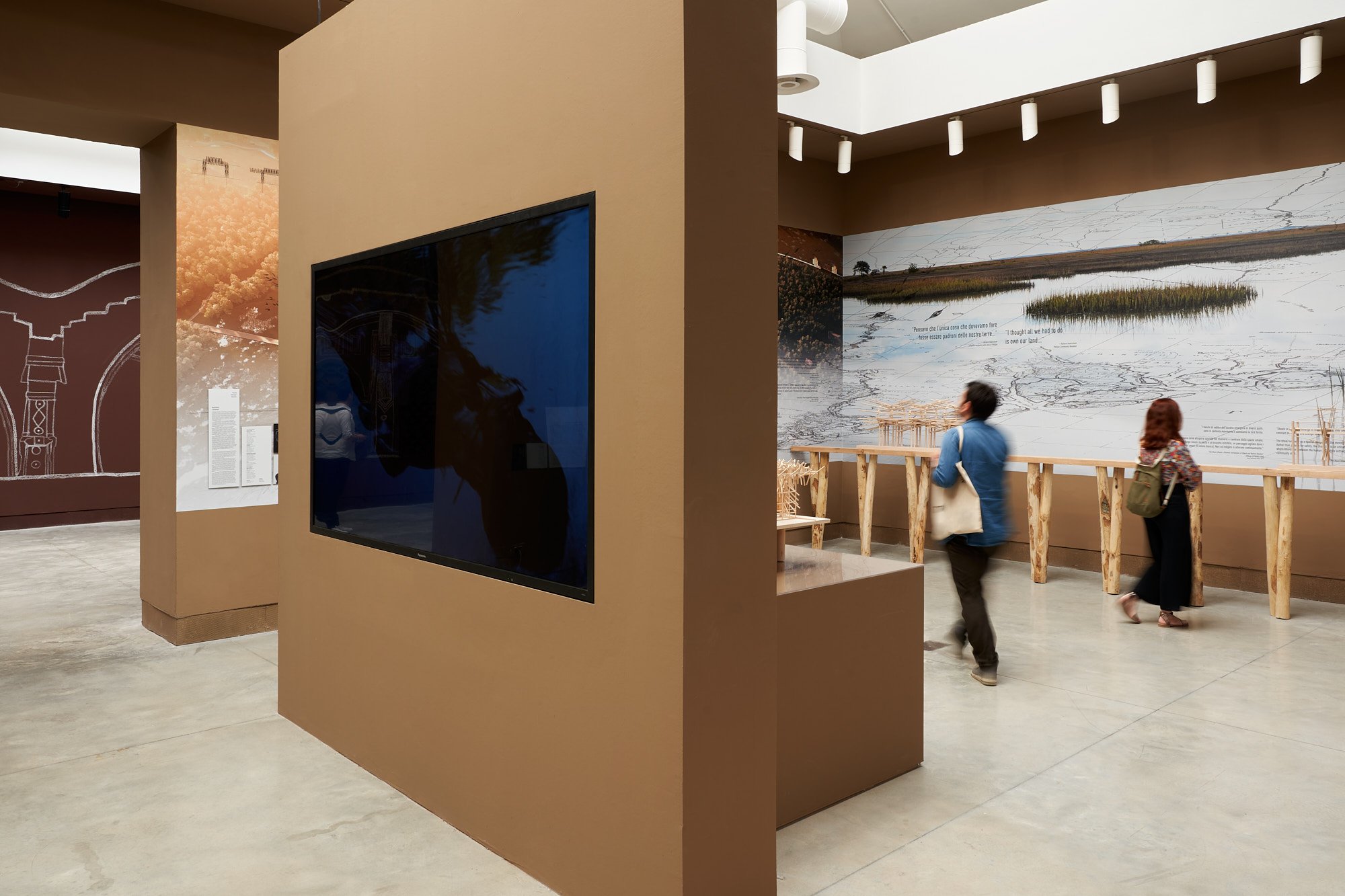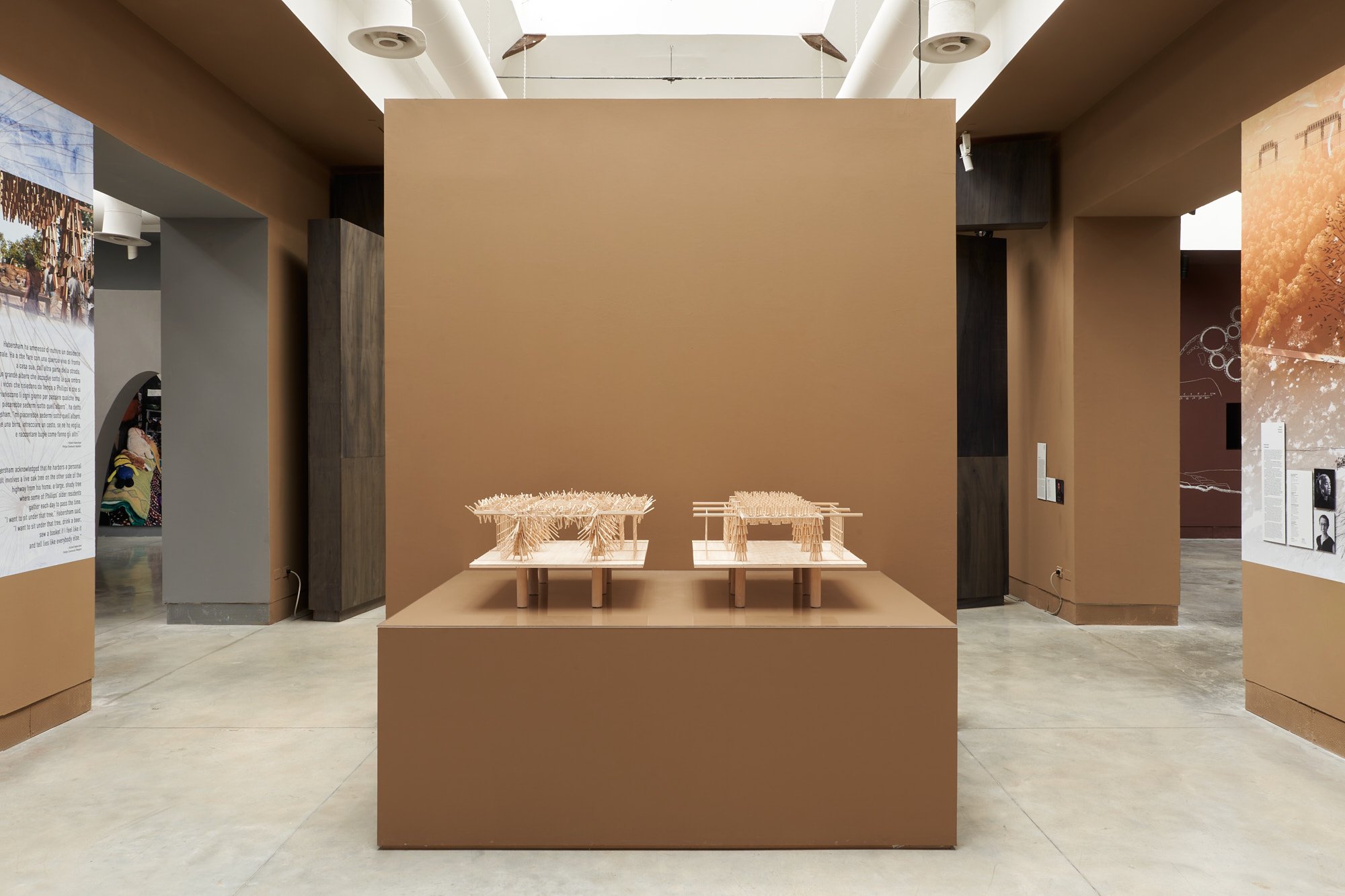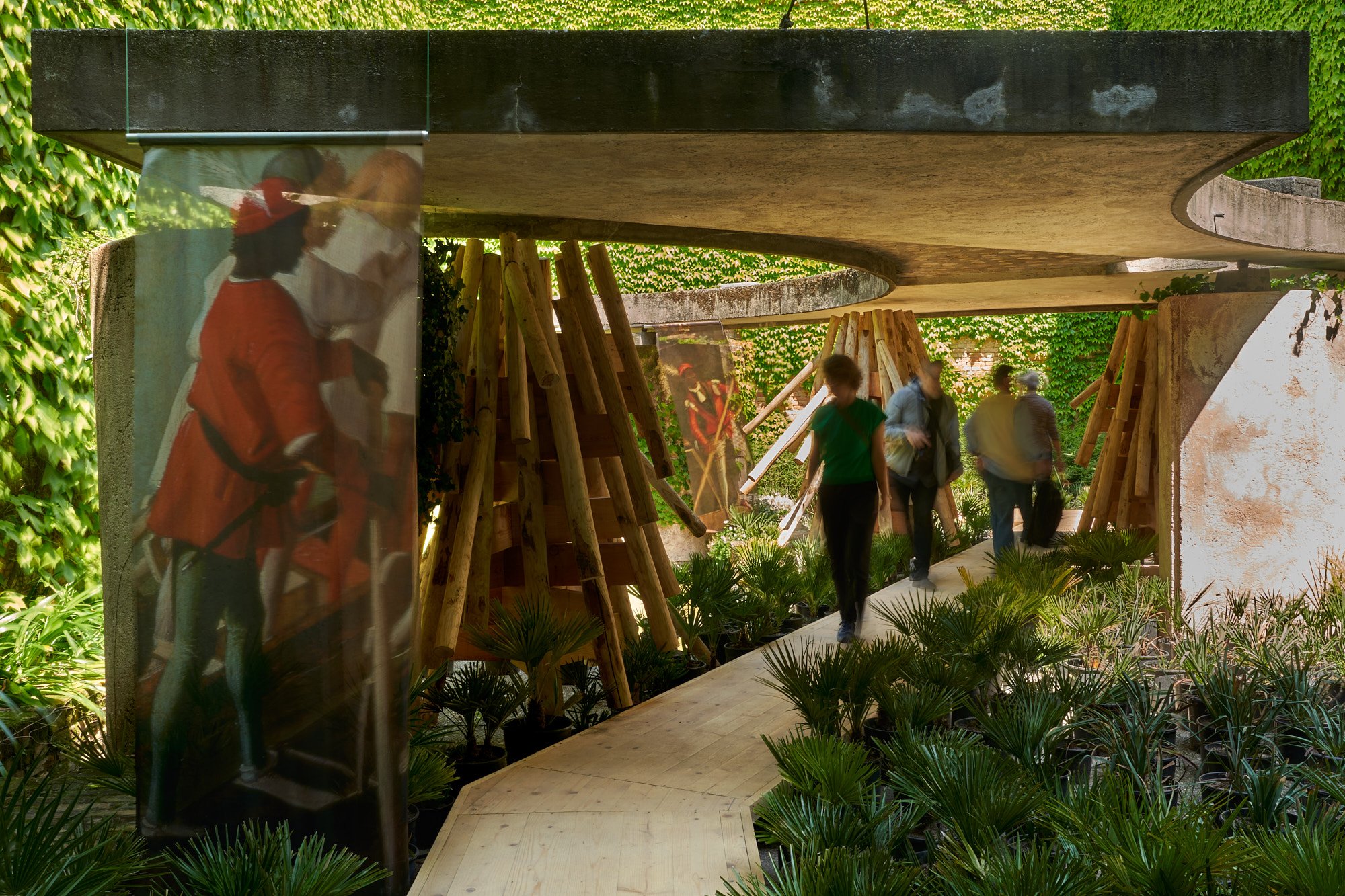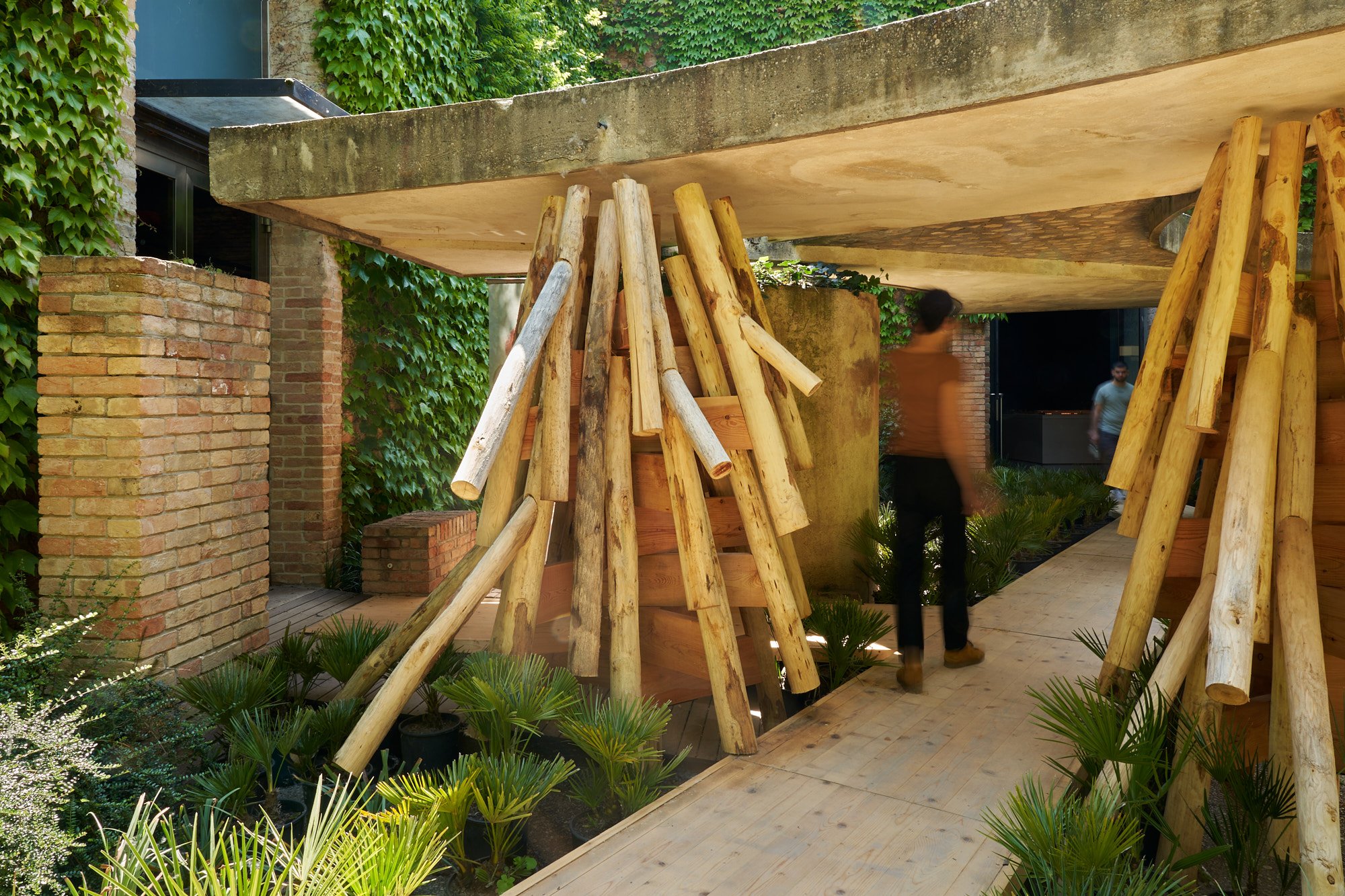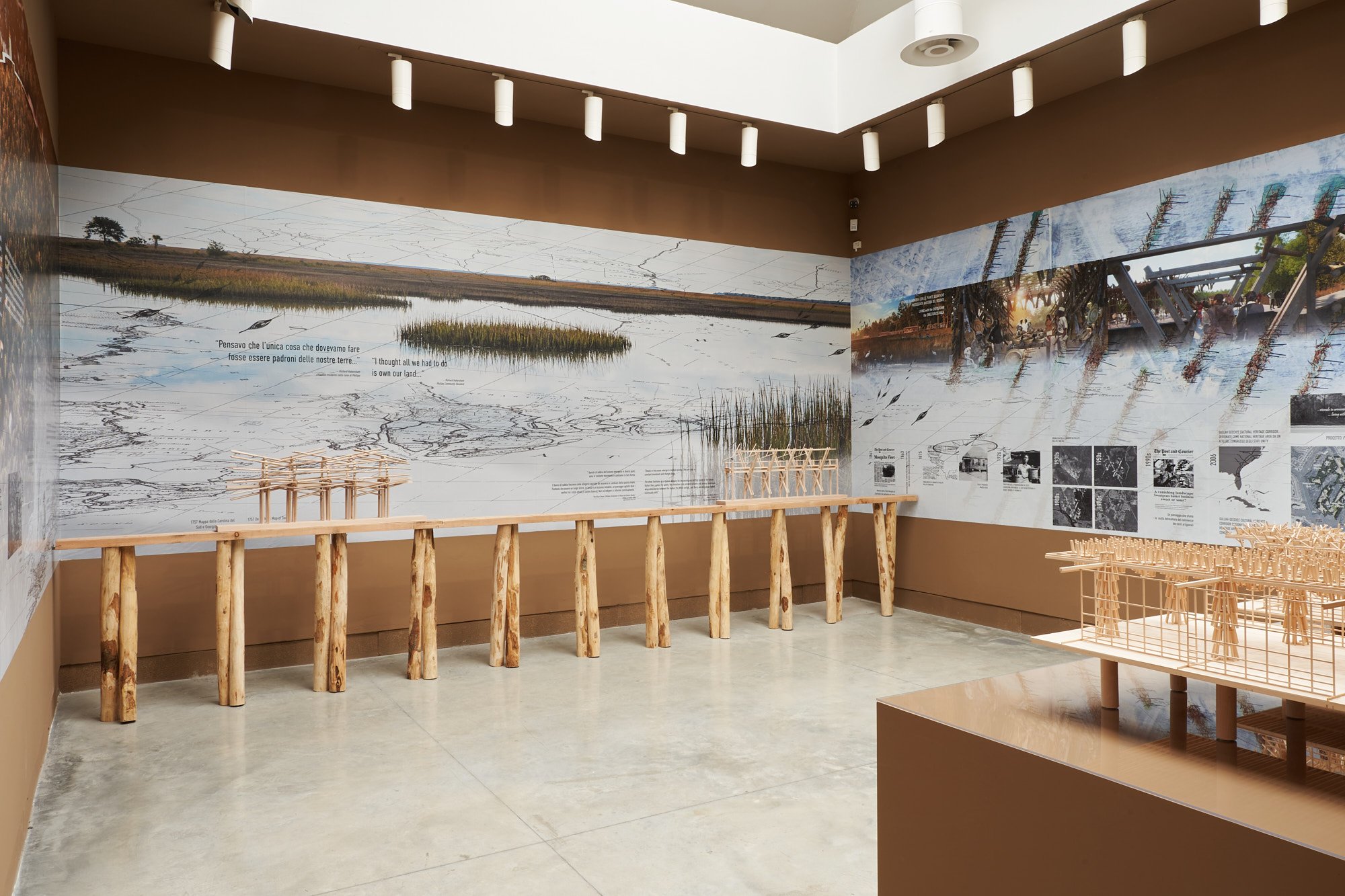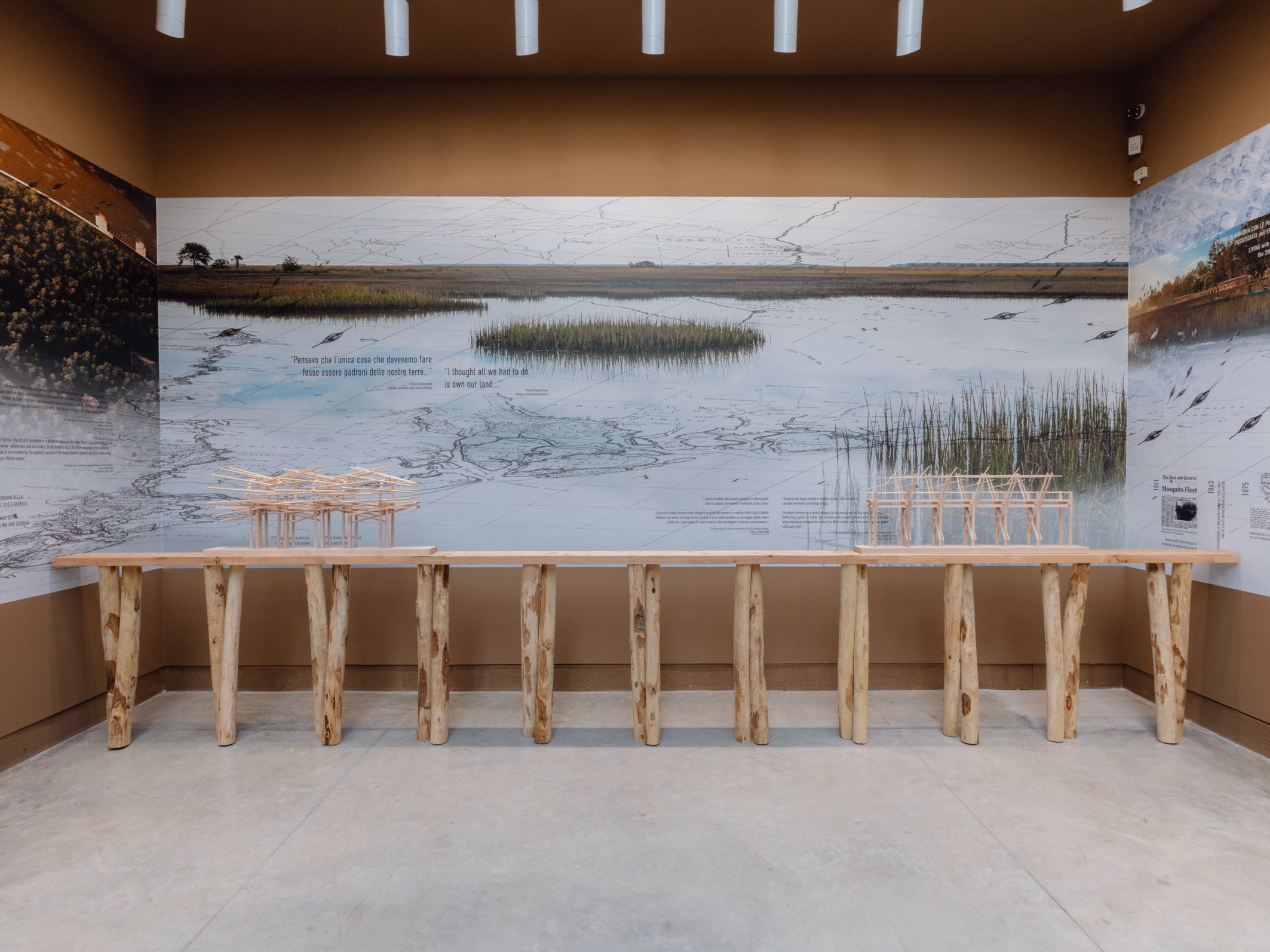Images by Clelia Cadamuro and Matteo de Mayda
2023 Venice biennale
The world’s flora, colonized alongside the diaspora of human conquest, brings into question the very idea of the “native.” Yet although place is no longer particular, and the “unspoiled” and the “untouched” is antiquated, there remains a penchant for “native.” Colonized peoples—the conquered, the vulnerable, the marginalized—are classified in this way. And today, in the controlled natural ecologies we live in, there is an advocacy for an origin fiction: the native plant.
We live in a hybrid world where people and flora are continuous strangers in new lands. Environments are already changed, in a state of constant becoming. Understanding them in this light, I ask: what if they could be born again, purely natural human constructs that engender new ways of living with the particularities of a given place? Can design create infrastructure and context for a new beginning where everything belongs to the same place, creating new productions that are hereditary, not mere copies?
The decolonized and decarbonized are not about sameness but difference. We are all native to the places that we inhabit over time, along with the flora that sprouts up around us. What if we could connect to environments through native infrastructures that do not separate us from the world and each other, but that enmesh us in the raw, unspoiled architecture and landscape of our machinations?


